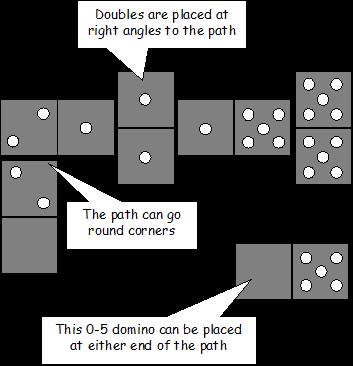Maths with Dominoes
This is the first is a series of blogs for parents and others at home with children.
Dominoes are usually easy to find and inexpensive, and make a great maths resource. If you don’t have access to any dominoes, print this sheet, paste it to the back of a cereal packet and cut up to make a set of dominoes. You will soon be ready for games, puzzles and problem solving.
The Natural Maths philosophy is very much based on engagement and success and we are very much worried that children may lose their joy of maths if they are subjected to too much worksheet practice during this extraordinary period.
Over the next few weeks we will be putting domino games, puzzles and problems on our blog as frequently as we can. The mathematics behind each activity will ensure that while having fun with your child you can also develop and extend their mathematical thinking and reasoning. We will have two broad primary school related categories, novice and advanced. Do not be limited by these labels! Match the level of your child’s confidence to the activities you select.
Remember, a little success goes a long way in creating a positive disposition toward maths and unfortunately the opposite is true of boredom and failure which leads to long term maths avoidance and in some cases a belief that ‘I don’t have a maths brain’.
Playing Dominoes
Our first suggestion is that you simply play the regular game of dominoes as described in this document. This will develop spontaneity with the patterns on the dominoes (known as subitizing) and the rules for joining them which underpin many of the puzzles and problems to follow.

Younger children will benefit from matching the dot patterns (subitizing) to join the ends each time, whereas older children should be encouraged to think strategically because at the end of a round the number of dots on any dominoes left in a player’s hand score against them.
Note: Our Subitizing series will be useful if your child is struggling with subitizing and basic addition strategies.
